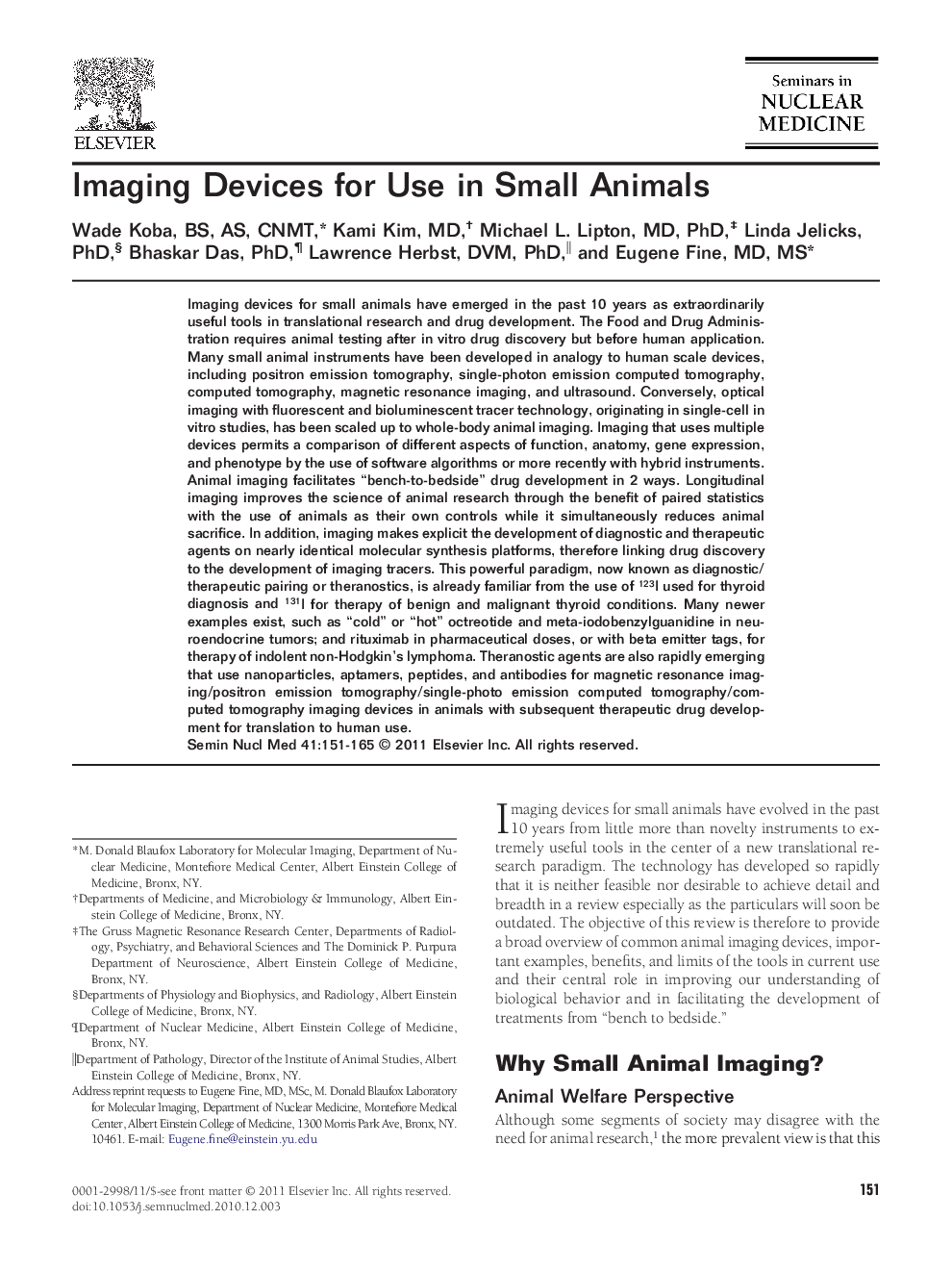| Article ID | Journal | Published Year | Pages | File Type |
|---|---|---|---|---|
| 4251361 | Seminars in Nuclear Medicine | 2011 | 15 Pages |
Imaging devices for small animals have emerged in the past 10 years as extraordinarily useful tools in translational research and drug development. The Food and Drug Administration requires animal testing after in vitro drug discovery but before human application. Many small animal instruments have been developed in analogy to human scale devices, including positron emission tomography, single-photon emission computed tomography, computed tomography, magnetic resonance imaging, and ultrasound. Conversely, optical imaging with fluorescent and bioluminescent tracer technology, originating in single-cell in vitro studies, has been scaled up to whole-body animal imaging. Imaging that uses multiple devices permits a comparison of different aspects of function, anatomy, gene expression, and phenotype by the use of software algorithms or more recently with hybrid instruments. Animal imaging facilitates “bench-to-bedside” drug development in 2 ways. Longitudinal imaging improves the science of animal research through the benefit of paired statistics with the use of animals as their own controls while it simultaneously reduces animal sacrifice. In addition, imaging makes explicit the development of diagnostic and therapeutic agents on nearly identical molecular synthesis platforms, therefore linking drug discovery to the development of imaging tracers. This powerful paradigm, now known as diagnostic/therapeutic pairing or theranostics, is already familiar from the use of 123I used for thyroid diagnosis and 131I for therapy of benign and malignant thyroid conditions. Many newer examples exist, such as “cold” or “hot” octreotide and meta-iodobenzylguanidine in neuroendocrine tumors; and rituximab in pharmaceutical doses, or with beta emitter tags, for therapy of indolent non-Hodgkin's lymphoma. Theranostic agents are also rapidly emerging that use nanoparticles, aptamers, peptides, and antibodies for magnetic resonance imaging/positron emission tomography/single-photo emission computed tomography/computed tomography imaging devices in animals with subsequent therapeutic drug development for translation to human use.
